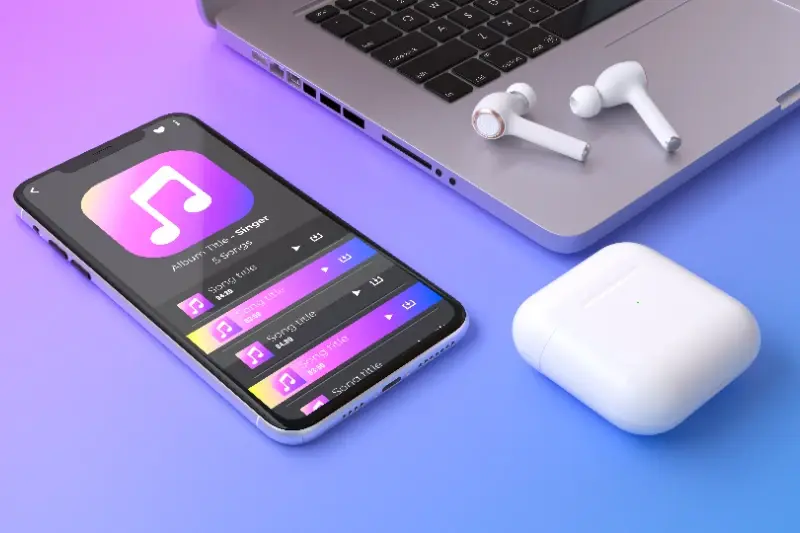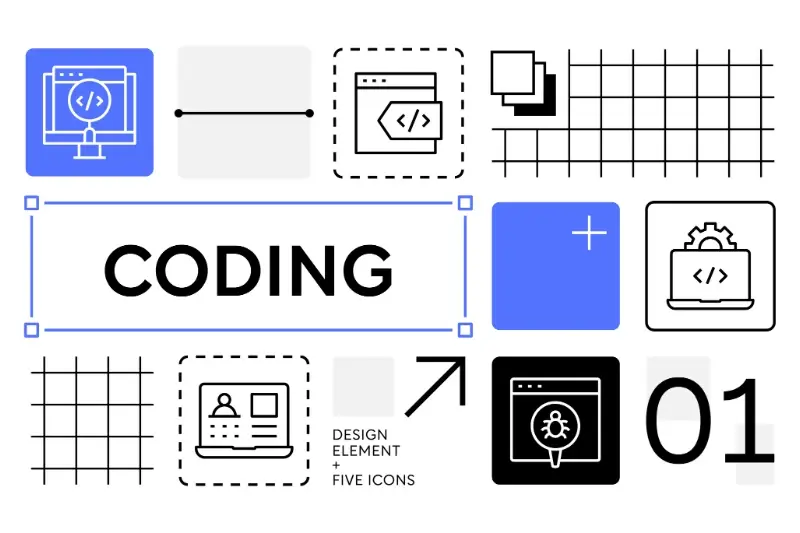The Hidden Costs of Taking Your App Global
Most app developers think going global just means translating their app into different languages. That's like saying cooking a meal is just heating up food—technically true, but missing about 90% of what actually happens. The real localisation costs start appearing after you've already committed to expanding internationally, and they have a habit of multiplying faster than you'd expect.
When we work with clients who want to take their apps global, the conversation usually starts with excitement about reaching millions of new users. Then we start talking numbers. Not just the obvious ones like translation fees, but the hidden expenses that catch even experienced developers off guard. We're talking about technical infrastructure changes, legal compliance requirements, different app store procedures, and ongoing support across multiple time zones.
The difference between a successful global app and an expensive mistake often comes down to understanding the true cost before you start, not after you've already spent half your budget
A global app isn't just your current app speaking different languages—it's a completely different beast that needs feeding, maintaining, and nurturing across multiple markets simultaneously. The companies that succeed internationally are the ones who plan for these hidden costs from day one, not the ones who discover them halfway through development.
Translation Is Just The Beginning
When most people think about taking their app global, translation springs to mind first—and that makes sense! You can't expect users in France to navigate through English menus or Germans to understand your onboarding flow if it's all in Spanish. But here's what I've learned after years of helping clients expand internationally: getting your text translated is actually the easy bit.
Sure, you'll need professional translators who understand context, not just someone who can use Google Translate. Your app's tone of voice needs to feel natural in each language, which means adapting jokes, cultural references, and even emoji usage. What works in one country might be completely inappropriate in another.
Beyond Words: Cultural Adaptation
The real challenge starts when you realise that different cultures interact with apps differently. Reading patterns change—Arabic and Hebrew users read right to left, which means your entire interface layout needs rethinking. Colour choices matter too; white symbolises purity in Western cultures but represents mourning in some Eastern ones.
Date formats, number systems, currency displays, payment preferences—the list goes on. You might discover that your beautiful minimalist design doesn't work in markets where users expect more detailed information upfront. Translation gets you through the door, but cultural adaptation keeps users engaged.
Technical Infrastructure Changes You Haven't Thought About
When most people think about taking their app global, they focus on translation and maybe different payment methods. But there's a whole technical side that can really catch you off guard—and it's not cheap to fix after the fact.
Your app's backend infrastructure needs some serious changes for global users. We're talking about content delivery networks (CDNs) to make your app load quickly in different countries, database replication so user data isn't travelling halfway around the world for every request, and server locations that comply with local data protection laws.
Database and Server Considerations
Then there's the data formatting issues you probably haven't considered. Different countries use different date formats, number formats, and currency displays. Your app needs to handle all of these automatically based on the user's location.
- Setting up regional server clusters
- Implementing proper data synchronisation
- Configuring CDNs for faster content delivery
- Updating your app to handle different data formats
- Ensuring compliance with local data storage laws
The localisation costs here can be substantial because you're not just translating text—you're rebuilding parts of your technical foundation. Most global app projects need at least 20-30% more development time just for these infrastructure changes, which is why choosing the right app development company with international experience is crucial.
Start planning your technical infrastructure changes early in the development process. It's much cheaper to build these capabilities from the beginning than to retrofit them later.
Legal And Compliance Costs That Catch You Off Guard
Legal requirements vary massively from country to country—and I mean massively. What's perfectly fine in the UK might be completely illegal in Germany or require special licences in Japan. Data protection laws alone can cost you thousands in legal fees just to understand what you need to do, never mind actually implementing the changes.
Take GDPR in Europe, for example. You'll need proper privacy policies, cookie consent mechanisms, and data handling procedures that meet strict European standards. Then there's China's Cybersecurity Law, which has completely different requirements for data storage and user verification. Each region seems to have its own rulebook.
Common Legal Costs You'll Face
- Legal consultation fees for each target country (£2,000-£10,000 per jurisdiction)
- Privacy policy and terms of service translations and localisation
- Data protection compliance audits and implementations
- Industry-specific licensing fees (particularly for fintech, healthcare, or gambling apps)
- Trademark registration and intellectual property protection
- Age verification systems for regions with strict child protection laws
The tricky bit is that these aren't one-off costs either. Laws change, new regulations come into effect, and you'll need ongoing legal support to stay compliant. For healthcare apps, understanding compliance requirements like HIPAA becomes even more complex when expanding internationally. Budget at least £5,000-£15,000 per major market just for the legal groundwork before you even start thinking about the technical implementation.
App Store Fees And Requirements For Each Country
Right, let's talk about something that'll make your accountant pull a face—app store fees that change depending on where you're selling. Apple and Google don't just charge you a flat rate and call it a day. Oh no, that would be too simple! Different countries have different tax rates, processing fees, and payout structures that can seriously impact your bottom line.
Take Europe, for instance. With VAT rates varying from 17% to 27% across different EU countries, your 30% app store commission suddenly becomes much more expensive. Then there's the currency conversion fees—every time someone buys your app in Japan, those yen need converting back to pounds, and guess who pays for that privilege?
Developer Account Requirements
Some countries require separate developer registrations or additional documentation before you can even list your app. China's App Store needs an ICP licence, whilst South Korea has its own certification processes. These aren't just one-off costs either—many require annual renewals and ongoing compliance checks.
We had a client who thought they'd covered all their bases until they discovered their app needed additional regulatory approval in three different markets, adding months to their launch timeline and thousands to their budget.
The real kicker? These fees and requirements change regularly. What works today might not work next quarter, meaning you need someone keeping track of these updates across every market you're targeting.
Marketing Your App In Different Markets
Marketing budgets can quickly spiral out of control when you're targeting multiple countries. What works brilliantly in the UK might completely flop in Japan—and trust me, I've seen this happen more times than I'd like to admit. Each market has its own social media platforms, advertising costs, and cultural preferences that affect how you promote your app.
The advertising costs alone will make your eyes water. Facebook ads in Germany cost significantly more than in Poland; Google Play ads in Australia have different pricing structures than in Canada. You'll need separate budgets for each region, and that means multiplying your marketing spend by however many countries you're targeting.
Platform Preferences By Region
- WeChat dominates in China (where Google Play isn't even available)
- LINE is massive in Japan and South Korea
- WhatsApp rules in Latin America and parts of Europe
- Instagram works well in Western markets but less so in others
- TikTok's effectiveness varies wildly by country and age group
You'll also need local influencers, translated marketing materials, and region-specific campaigns. What's more, you might need different app store screenshots, descriptions, and even app icons to appeal to local tastes. It's not just translation—it's complete market adaptation.
Support And Customer Service Across Time Zones
When your global app gains traction, support requests start flooding in from every corner of the world. The problem? Your customers expect responses during their working hours, not yours. This means building a support system that operates across multiple time zones—and trust me, it's more complicated than just hiring a few extra people.
Setting up 24/7 support requires careful planning and significant investment. You'll need to decide whether to hire local teams in each region, outsource to specialised companies, or create a follow-the-sun model where your existing team works in shifts. Each approach has different cost implications and quality considerations.
Common Time Zone Support Challenges
- Training multiple teams on your app's features and common issues
- Maintaining consistent service quality across all regions
- Managing handovers between teams in different time zones
- Providing multilingual support with cultural sensitivity
- Coordinating urgent technical issues that span multiple regions
The costs add up quickly. A single support agent might cost £25,000 annually in the UK, but you'll need coverage across three shifts minimum. For financial apps, this becomes even more critical as users have zero tolerance for delays when money is involved, which is one reason why users abandon financial apps so quickly. Factor in training, management overhead, and the tools needed to coordinate everything, and your support costs can easily triple your initial estimates.
Start with automated responses and chatbots for common queries before investing in full 24/7 human support. This reduces your initial localisation costs while you test market demand.
Ongoing Maintenance And Updates For Multiple Regions
Once your app is live across different regions, the real work begins—keeping it running smoothly everywhere. I've worked with clients who thought launching globally was the hard part, only to discover that maintaining an app across multiple markets is where the real costs pile up.
Every time you push an update, you're not just updating one app anymore. You're updating dozens of versions across different app stores, each with their own review processes and timelines. Apple's App Store in Japan might approve your update in two days, while Google Play in Germany takes a week. This means you need to plan releases weeks in advance and coordinate timing across regions.
The Hidden Costs Keep Coming
Bug fixes become exponentially more expensive when they affect multiple regions. A payment processing issue in Brazil doesn't just require a technical fix—it needs legal review, compliance checks, and sometimes different solutions for different markets. Your development team needs to understand regional regulations, payment systems, and local user behaviours.
Here's what you'll be dealing with regularly:
- Localisation updates for new features across all supported languages
- Regional compliance changes that require code modifications
- Different app store requirements and review processes
- Testing on local devices and payment systems
- Managing multiple development and staging environments
The maintenance costs can easily double or triple your original development budget within the first year. If you're considering the long-term value of your app, you might even wonder about selling your app to another company that has the resources to handle global maintenance. Plan for it early, or you'll find yourself scrambling to keep up with regional demands while your app quality suffers.
Conclusion
Taking your app global isn't just about pressing a button and watching downloads roll in from around the world—I wish it were that simple! The localisation costs alone can catch many developers off guard, but as we've explored throughout this post, they're just the tip of the iceberg. From technical infrastructure changes to legal compliance, app store requirements to ongoing support across multiple time zones, building a truly global app requires careful planning and a realistic budget.
The reality is that most successful global apps cost significantly more to maintain than their creators initially expected. Translation might seem like the obvious expense, but it's often the hidden costs that really add up. Server infrastructure, customer support, marketing campaigns tailored to different cultures, and keeping up with varying legal requirements across countries—these are the expenses that can make or break your international expansion.
But here's the thing: understanding these costs upfront doesn't mean you shouldn't go global. It means you can plan properly, budget realistically, and avoid the financial surprises that derail so many promising apps. The global app market is massive and the opportunities are real, but success comes to those who prepare for the full journey, not just the first step.
Share this
Subscribe To Our Blog
You May Also Like
These Related Stories

How To Choose The Right App Development Partner For Your Business

When Your App Needs Music Licensing (And How Much It Costs)





